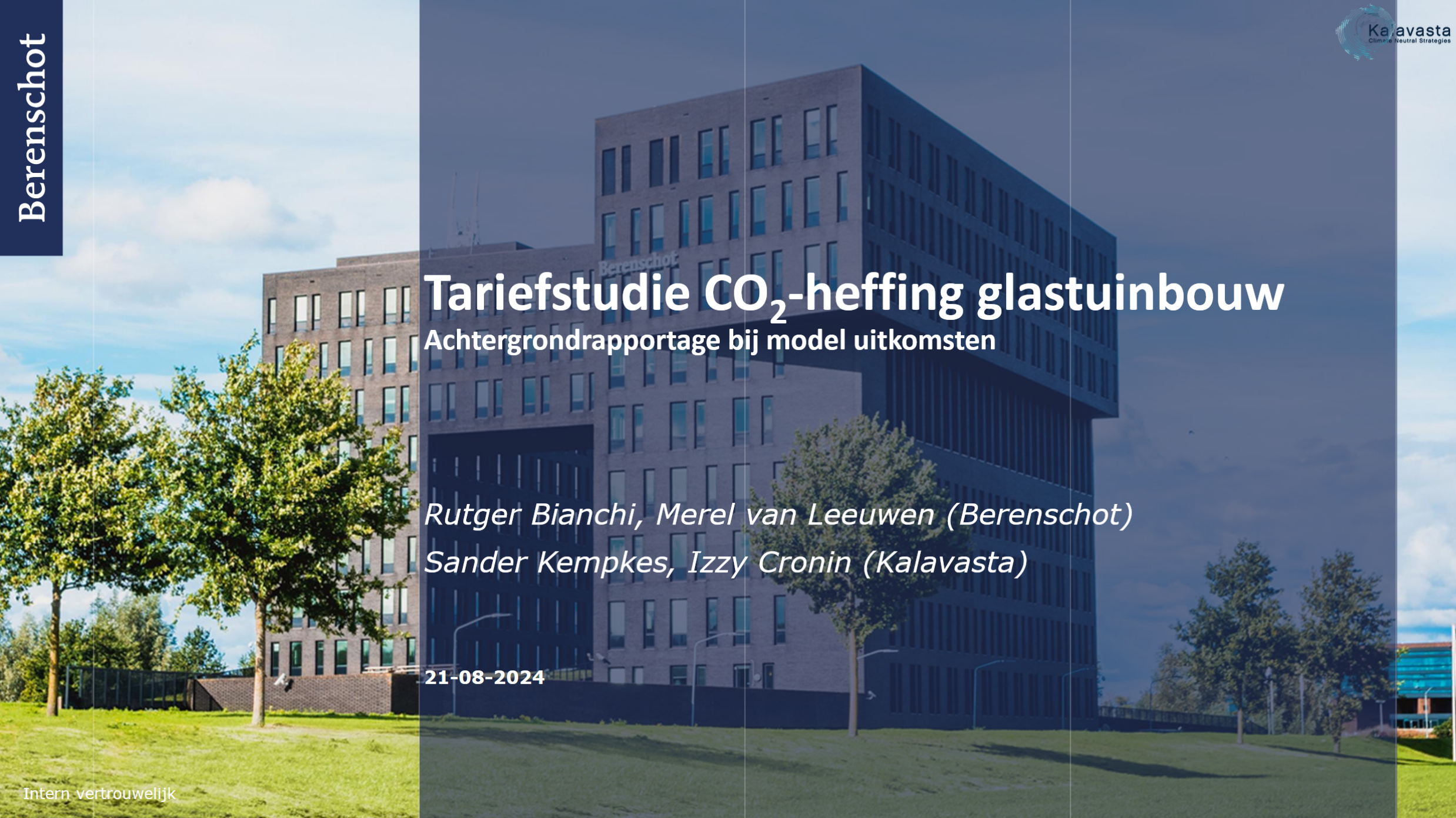An analysis of CO2 levy rates for Dutch greenhouse horticulture (2024)


The Dutch Fiscal Climate Measures Greenhouse Horticulture Act required a rate study to determine the appropriate level of the sector-wide CO2 levy for the coming years. The greenhouse horticulture sector aims to reduce its emissions to 4.3 Mton CO2-equivalents by 2030, and the levy is one of the key instruments to achieve this goal.
Berenschot and Kalavasta developed a computational model that accounts for the sector's complexity. The model takes into account various aspects such as; different business types and sizes in the sector, regional differences in sustainability options, flexible deployment of combined heat and power installations (CHP), energy saving potential, grid congestion constraints and the impact of energy prices and fiscal policies. The model calculates investment decisions for various sustainability options based on net present value calculations, while considering practical limitations such as grid capacity and technology availability in different regions.
The study determined that a levy of €14.40-14.60 per ton CO2 in 2030 would be sufficient to achieve the sector's emission reduction target. This rate is significantly lower than ETS or ETS2 prices, primarily because other fiscal measures (such as abolishing the CHP input exemption and adjusted tax rates) already provide strong incentives for sector sustainability.
Based on the study's recommendations, the levy rate will be monitored closely and evaluated at least every two years, with adjustments if necessary. The sensitivity analysis showed that changes in gas prices, cultivation intensity, CHP (flex) revenues, and grid congestion have significant impact on the required levy rate. Supporting policy measures will likely be needed to ensure greenhouse operators have viable options to implement the most cost-effective sustainability measures and aren't hindered by external circumstances such as grid congestion or access to capital.